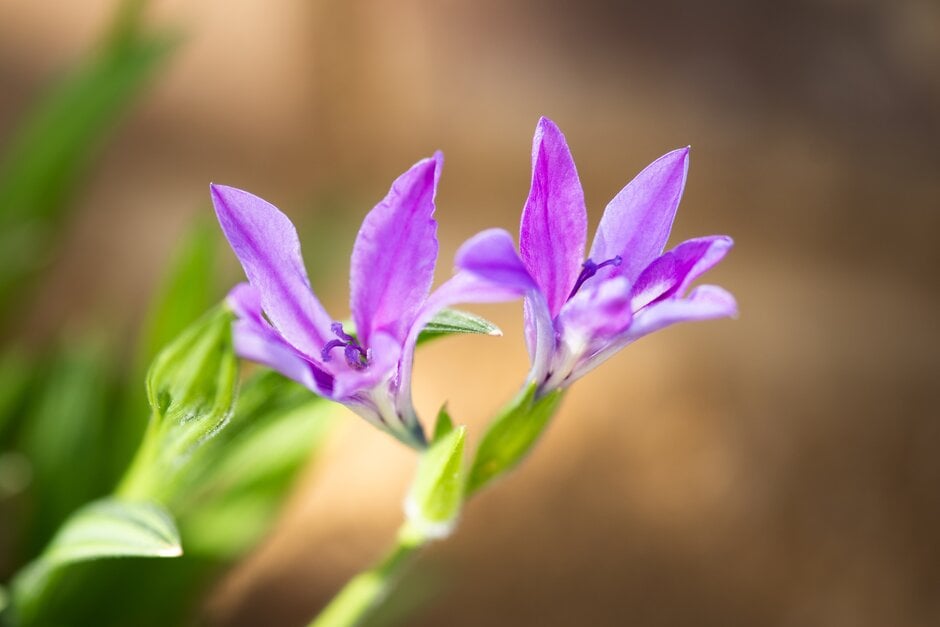Size
Ultimate height
0.1–0.5 metresTime to ultimate height
1 yearUltimate spread
0.1–0.5 metresGrowing conditions
Moisture
Well–drainedpH
NeutralColour & scent
| Stem | Flower | Foliage | Fruit | |
| Spring | Blue Purple | Green | ||
|---|---|---|---|---|
| Summer | ||||
| Autumn | ||||
| Winter |
Position
- Full sun
Aspect
South–facing or West–facing
Exposure
Sheltered Hardiness
H2Botanical details
- Family
- Iridaceae
- Native to GB / Ireland
- No
- Foliage
- Deciduous
- Habit
- Bushy
- Genus
Babiana are cormous perennials with ribbed, erect, narrowly lance-shaped leaves and spikes of often fragrant, funnel-shaped flowers
- Name status
Correct
- Plant range
- South Africa (Cape)
How to grow
Cultivation
Grow under glass from corms in autumn. Plant into peat-free John Innes No 2 compost and grow on in full light. Apply a weak, balanced liquid fertiliser every 3 weeks before flowering. Dry off as the leaves die down in summer. Corms can also be bought in spring for planting outside for a one off summer blooming, but after this, would need to be grown under glass and allowed to winter grow. Plant corms 15cm (6in) deep
Propagation
Propagate by seed as soon as ripe in autumn in a temperature of 13°C-15°C (55°F-59°F). Remove offsets when the corms are dormant in autumn. Pot into equal parts peat-free, loam-based compost and sharp sand
Suggested planting locations and garden types
- City and courtyard gardens
- Cottage and informal garden
- Patio and container plants
- Flower borders and beds
- Wall side borders
Pruning
No pruning required
Pests
May be susceptible to glasshouse red spider mite
Diseases
Generally disease-free
Get involved
The Royal Horticultural Society is the UK’s leading gardening charity. We aim to enrich everyone’s life through plants, and make the UK a greener and more beautiful place.
